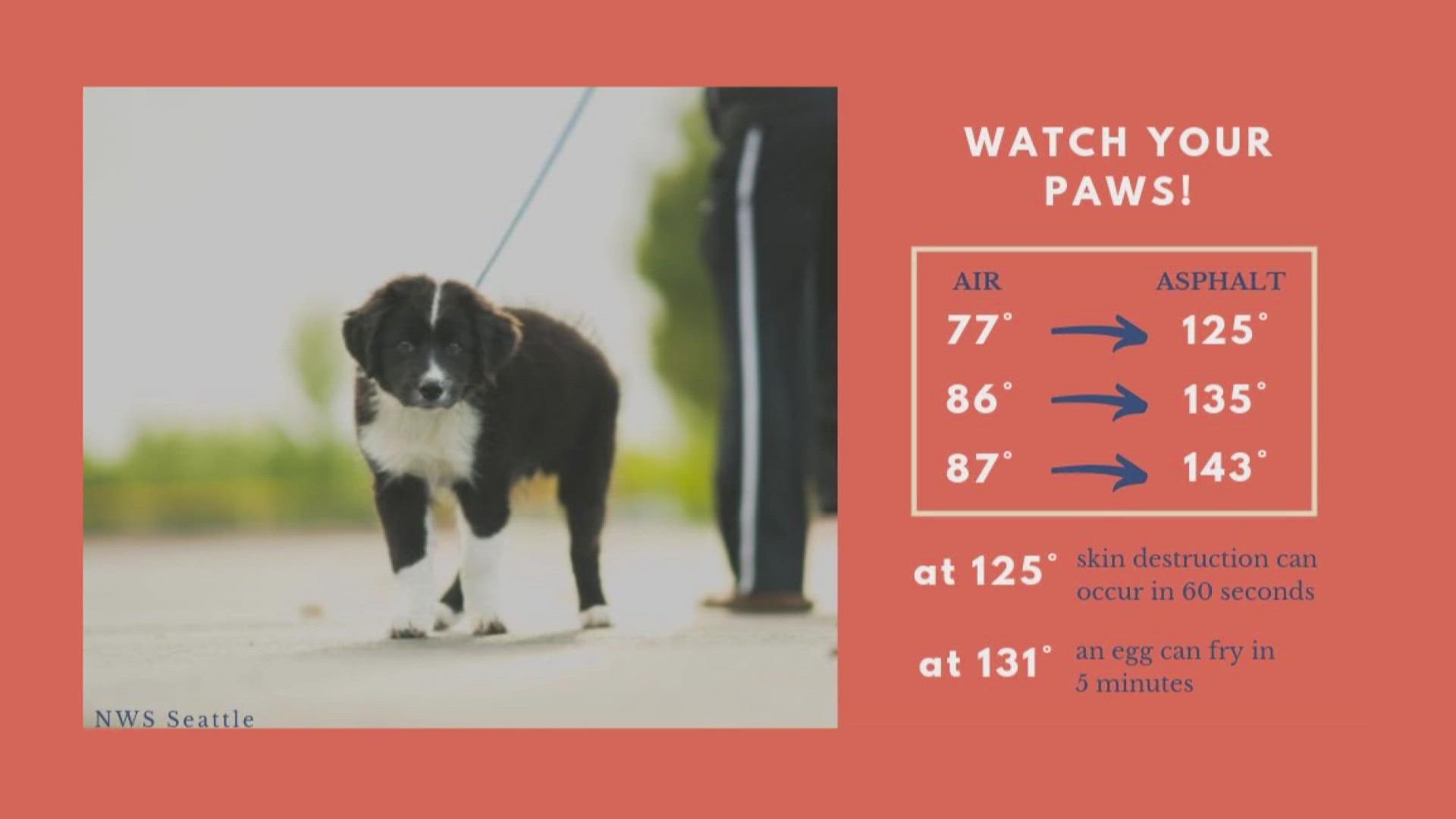MOLINE, Ill. — Next week, the Quad Cities will see another heat wave with temperatures in the high 90s. With the hot weather on the way, here are some things you can do to protect your pet from the heat.
The most well-known safety tip is to not leave your pets in your car. Inside turned-off cars, internal temperatures can rise into the 100s very quickly. On a day when the high is 85, a car can reach 102 degrees in about 10 minutes and 120 degrees in 30 minutes. Your pet could suffer irreversible organ damage or death from continuous exposure to these temperatures.
Doghouses do not provide relief from the heat; they can actually make it worse, since the heat can get trapped inside of the house, just like cars.
Another well-known safety tip is to walk your pets in the morning or evening. In the middle of the day, the asphalt gets hotter and can burn your pets’ paws and keep them hotter since their bodies are close to the ground. During walks or time outside, it's best to do it in the grass since it doesn't capture heat. Carry water with you on walks to keep you and your pet hydrated.
If you're doing activities outside, like yard work or outdoor games, add ice to the water to keep it cooler for longer. You can also buy or make yourself pupsicles if you have a dog. Make sure there is a shaded area for your pet to get a break from the heat and sun.
Another thing you can use to help with the heat are cooling body wraps, vests, or mats. You soak them in cool water, and they'll stay cool for up to three days. They do remain dry after you soak them, so you do not have to worry about excess water. If your dog likes baths you can soak them in warm water.
Dogs sweat through their feet, so using a fan on their body will not help them with heat. If you use pet sunscreen or insect repellent, use products that are made specifically for use on animals.
Do not shave your dog's hair to try to help cool them from the heat. You can trim their hair, but the layers of a dog's coat protects them from overheating and sunburns. Brushing cats more often than usual can prevent problems caused by overheating.
Pets that have flat faces or short muzzles, like pugs and Persian cats, are overweight, elderly, or suffer from heart and lung disease are more susceptible to having a heatstroke.
Signs of Heatstroke:
- Excessive panting and drooling
- Difficulty breathing
- Vomiting
- Diarrhea, with or without blood
- Weakness
- Lack of coordination or stumbling
- Sudden collapse
- Seizures
If your pet shows signs of heat stroke, take them inside and give them cool water, not cold. Take their rectal temperature and if it's above 102.2 degrees, cover them in towels soaked in lukewarm water. Do not place them in cold water or put cold water on them; this can cause dangerous changes in blood pressure. You can also wipe rubbing alcohol on their paws. After these steps, your pet's temperatures should start to decrease.

